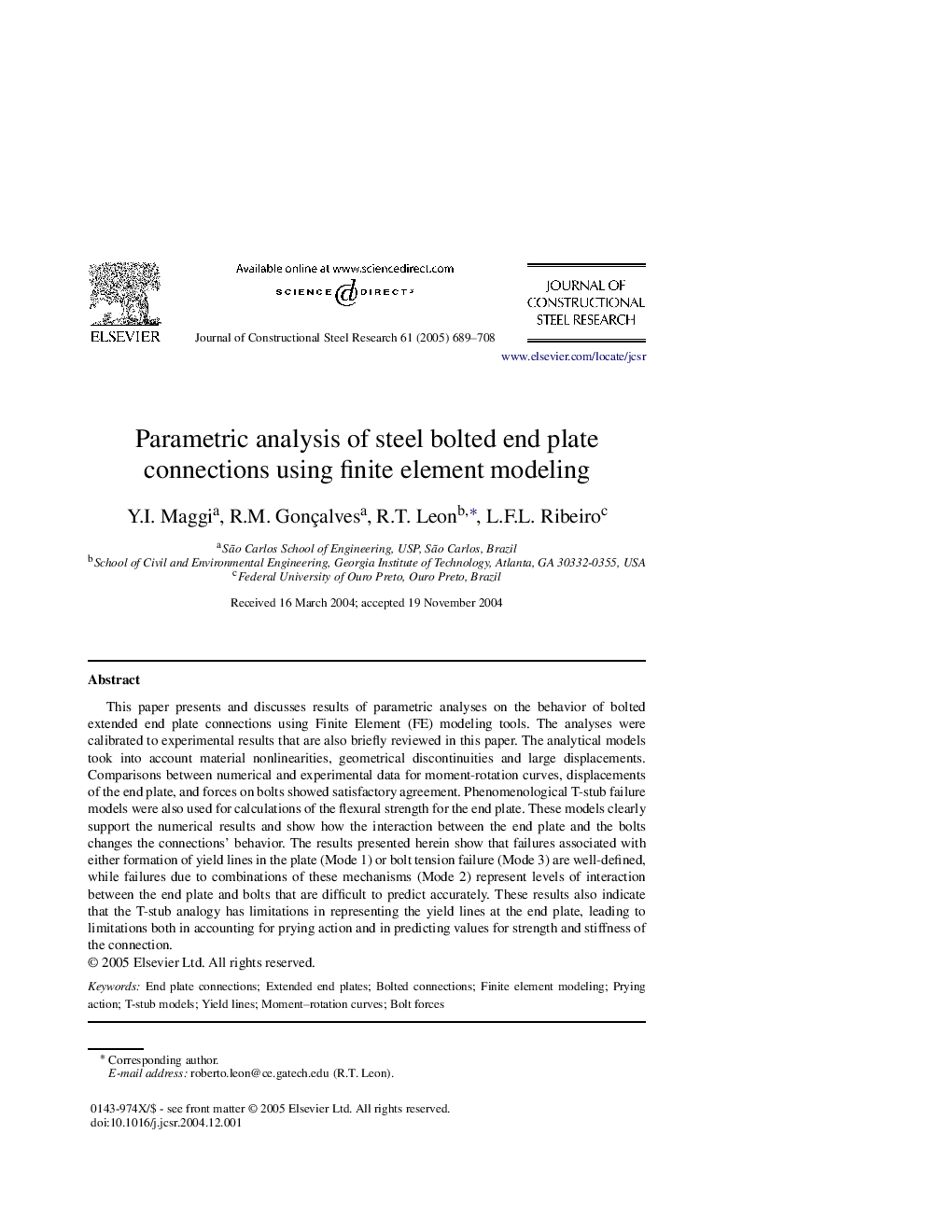| Article ID | Journal | Published Year | Pages | File Type |
|---|---|---|---|---|
| 10288838 | Journal of Constructional Steel Research | 2005 | 20 Pages |
Abstract
This paper presents and discusses results of parametric analyses on the behavior of bolted extended end plate connections using Finite Element (FE) modeling tools. The analyses were calibrated to experimental results that are also briefly reviewed in this paper. The analytical models took into account material nonlinearities, geometrical discontinuities and large displacements. Comparisons between numerical and experimental data for moment-rotation curves, displacements of the end plate, and forces on bolts showed satisfactory agreement. Phenomenological T-stub failure models were also used for calculations of the flexural strength for the end plate. These models clearly support the numerical results and show how the interaction between the end plate and the bolts changes the connections' behavior. The results presented herein show that failures associated with either formation of yield lines in the plate (Mode 1) or bolt tension failure (Mode 3) are well-defined, while failures due to combinations of these mechanisms (Mode 2) represent levels of interaction between the end plate and bolts that are difficult to predict accurately. These results also indicate that the T-stub analogy has limitations in representing the yield lines at the end plate, leading to limitations both in accounting for prying action and in predicting values for strength and stiffness of the connection.
Related Topics
Physical Sciences and Engineering
Engineering
Civil and Structural Engineering
Authors
Y.I. Maggi, R.M. Gonçalves, R.T. Leon, L.F.L. Ribeiro,
